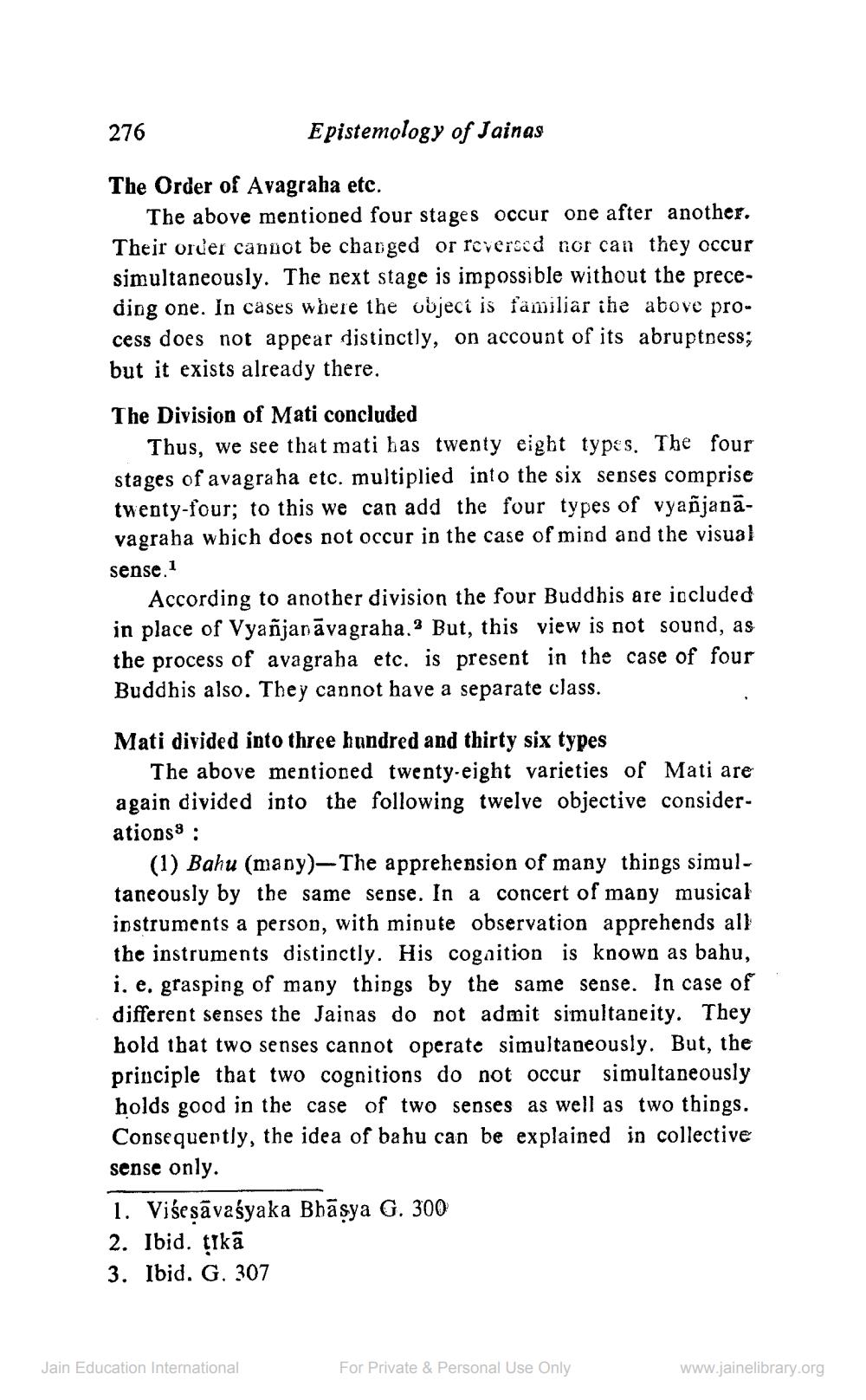________________
276
Epistemology of Jainas
The Order of Avagraha etc.
The above mentioned four stages occur one after another. Their order cannot be charged or reversed nor can they occur simultaneously. The next stage is impossible without the preceding one. In cases where the object is familiar ihe above process does not appear distinctly, on account of its abruptness; but it exists already there.
The Division of Mati concluded
Thus, we see that mati bas twenty eight types. The four stages of avagraha etc. multiplied into the six senses comprise twenty-four; to this we can add the four types of vyañjanāvagraha which does not occur in the case of mind and the visual sense. 1
According to another division the four Buddhis are included in place of Vyañjanāvagraha. But, this view is not sound, as the process of avagraha etc. is present in the case of four Buddhis also. They cannot have a separate class.
Mati divided into three hundred and thirty six types
The above mentioned twenty-eight varieties of Mati are again divided into the following twelve objective considerations :
(1) Bahu (many)- The apprehension of many things simultaneously by the same sepse. In a concert of many musical instruments a person, with minute observation apprehends all the instruments distinctly. His cognition is known as bahu, i. e. grasping of many things by the same sense. In case of different senses the Jainas do not admit simultaneity. They bold that two senses cannot operate simultaneously. But, the principle that two cognitions do not occur simultaneously holds good in the case of two senses as well as two things. Consequently, the idea of bahu can be explained in collective sense only. 1. Viśesāvaśyaka Bhāsya G. 300 2. Ibid. ţikā 3. Ibid. G. 307
Jain Education International
For Private & Personal Use Only
www.jainelibrary.org




